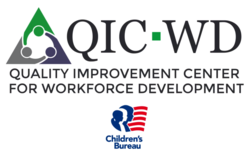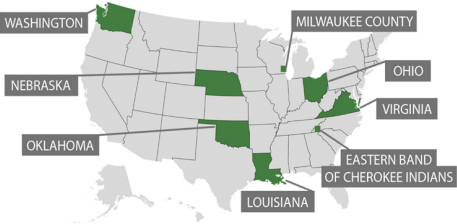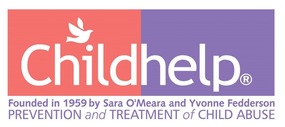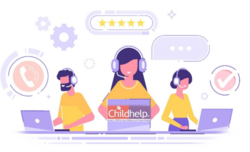
|
|
October 2023 | Issue 17
The Grantee Connection is a quarterly digest from select Children's Bureau discretionary grants to inform research, capacity building, and practice and program improvement efforts.
This issue is focused on the work of grants that have come to an end this past fiscal year. Below you will find an overview of each project as well as the accomplishments, lessons learned, and key materials. At the end of the newsletter is information on the recently announced Children's Bureau discretionary grant awards.
Featured Grantees
|
Quality Improvement Center for Workforce Development
The Quality Improvement Center for Workforce Development (QIC-WD) operated for 7 years and worked with 54 distinct public and tribal child welfare jurisdictions to address workforce issues. The QIC-WD used agency data and best practice approaches and was supported by site teams that included human resources (HR) and child welfare professionals.

The QIC-WD engaged in in-depth, multiyear projects in eight sites, and highlights from those experiences are featured in this short video. A consistent approach to implementation was applied, and rigorous evaluation methods were used in those workforce intervention sites.
The QIC-WD workforce interventions were all designed to decrease worker turnover, with some addressing elements of practice and well-being, but they varied in how the work was conducted. Some agencies started at the beginning of the employee lifecycle and considered how employees were selected and onboarded. The competency-based selection process tested in Oklahoma was custom-designed based on input from workers and supervisors to develop an interview process that would identify candidates who possess the fundamental competencies that are needed but cannot or will not be achieved through training. The study found that this new process lowered the risk of an employee leaving by 22 percent. The onboarding program designed for the Eastern Band of Cherokee Indians was implemented on a smaller scale. It was found to result in better organizational socialization, which is known to be related to turnover, among those who participated in it.
Another approach to addressing turnover was to reexamine the job altogether. In Louisiana, the QIC-WD team conducted a job redesign involving HR, civil service representatives, and agency staff. This complex initiative resulted in the creation of teams focused on prevention and permanency. Each team included a newly designed professional role, the child welfare team specialist, who was responsible for administrative aspects of the caseworker job. They found that the teaming model improved a variety of measures related to staff well-being and case practice, although it did not impact turnover.
Attention was also paid to the worker's experience and well-being in order to improve retention. The Milwaukee site implemented Availability, Responsiveness, Continuity (ARC) to elevate worker voice in agency decision-making, and it found positive changes in organizational culture and climate, openness to change, psychological safety, and leadership support. In addition, retention was higher among those who participated in ARC teams than those who did not.
|

Two other agencies implemented Resilience Alliance (RA) to address job-related traumatic stress. Ohio supplemented RA with supportive supervision, and Nebraska enhanced RA with peer groups. Participants in both states had a positive experience with RA. In Ohio, the intervention positively impacted participants' coping and resilience skills, among other outcomes, but RA did not impact turnover in either site.
Finally, two QIC-WD sites in Washington and Virginia addressed worker well-being by enhancing the job with a formal telework policy and technology tools to improve access to administrative information remotely. The telework study in Washington found no effects on job attitudes or turnover. However, interviews with participants identified several perceived benefits and challenges of telework in child welfare settings. The mobile application developed in Virginia positively impacted the workforce, especially when working from home became the norm in 2020. Implementing the COMPASS|Mobile application was found to enhance staff beliefs that the agency cares about them, reduce stress, and improve some practice outcomes. The intervention did not impact turnover.
There is no simple solution to "fix" the turnover problem in child welfare. It requires a strong partnership with HR, an understanding of workforce data, a commitment by leadership, thoughtful communication and implementation strategies, and the inclusion and buy-in from child welfare workers to inform the workforce initiative. There is always some crisis impacting agencies (during the QIC-WD’s short tenure, there was a pandemic, the "Great Resignation," natural disasters, a federal administration change, and project leadership changes in every site). Thus, the QIC-WD studied interventions in real-world conditions, adapting as needed, like child welfare agencies do every day.
Undoubtedly, the QIC-WD has only scratched the surface in answering the complex question of "what works?" in addressing child welfare worker turnover, but it has curated the research from a variety of areas, conducted rigorous evaluations in real-world conditions, condensed lessons into tips, and provided our take on what we see happening in the child welfare workforce across a variety of jurisdictions.
Learn more: The University of Nebraska's Digital Commons will host QIC-WD products and ensure widespread accessibility of forthcoming research journal articles, and Child Welfare Information Gateway and the National Child Welfare Workforce Institute will house the collection of products. The QIC-WD hopes that child welfare leaders, professionals, and researchers will build on this work to continue to support the child welfare agencies as they advance in using data to make informed decisions to strengthen the child welfare workforce.
Graphics from the QIC-WD
|
 |
Prevent Abuse of Children Text and Chat Hotline
The Prevent Abuse of Children Text and Chat Hotline (PACTECH) project began in October 2018. The original scope of work included implementing text and chat services to the existing Childhelp National Child Abuse Hotline, which was previously calls only, and integrating research efforts to examine the results. In the few years prior to this award, the Childhelp hotline recognized that over 90 percent of people reaching out to the hotline were adults calling on behalf of children.

The team knew that youth needed firsthand support, but they were not contacting the hotline. Research indicated that youth preferred to communicate through text and chat and were very fluent in using technology to do so. This grant funding became the opportunity for the Childhelp hotline to implement text and chat services to reach and support youth firsthand. The problem statement of the project was "Youth at risk of and experiencing abuse and neglect need access to trained professionals for information, education, and emotional support using youth-centered technologies in a confidential environment."
The first year of the PACTECH project consisted of identifying text and chat technology platforms, training counselors on the new communication modalities, setting up outcome evaluation design, and conducting a 6-month pilot period. The pilot period included working in tandem with researchers the Arizona State University-Southwest Interdisciplinary Research Center to conduct a focus group and establish data collection variables, including presurvey and postsurvey questions for text and chat users to learn more about who was using the service and what issues help seekers were reaching out about. These were all critical steps in understanding how to best support those reaching out and ensuring the appropriate resources were available to refer to when indicated. Through this period, patterns quickly became apparent in the most successful text and chat conversations, which led the PACTECH team to consider a layer of qualitative research.
|

Qualitative research became a top priority a few years into the project as the patterns emerged more fully over time. A researcher from Purdue University joined the team to design an evaluation process. The outcome of this process included establishing an evidence-informed practice model for interactions through text and chat with youth who have experienced maltreatment. This was accomplished through a community-based participatory research model, and the benefits were seen almost immediately on both the programs and the research sides.
In addition to serving young people and building practices in research, it was also important to prioritize supporting the helpers, especially as COVID-19 emerged early in the PACTECH project. A reflective supervision model was established using a trauma-informed framework to provide regular opportunities for frontline counselors to meet with supervisors and stay connected in a new remote working environment. It also allowed for a robust discussion on changes occurring as the research findings were unveiled and practice models launched. A series of focus groups were also conducted to check in with team members about the impact of COVID-19 and vicarious trauma and vicarious resilience.
The 5-year PACTECH project had numerous findings and accomplishments, including the development of the practice model, positive postcontact outcomes from youth, an understanding of how best to raise awareness of the service with youth, the development of a youth advisory council, an updated website with new resources for youth, and a document to share key findings and implementation recommendations with others. Most importantly, PACTECH served over 58,000 help seekers throughout the project, far exceeding the projection of serving 39,000 over a 4-year period. Implementing a project of this size on a national scale is a large undertaking that requires robust resources. Still, the reward of young people having access to help and feeling supported far exceeds any challenges.
Learn more: Reports and findings from the project are available on the Childhelp National Child Abuse Hotline website.
Graphics from Childhelp
|
 |
National Quality Improvement Center on Tailored Services, Placement Stability, and Permanency for Lesbian, Gay, Bisexual, Transgender, Questioning, and Two-Spirit Children and Youth in Foster Care

The National Quality Improvement Center on Tailored Services, Placement Stability, and Permanency for Lesbian, Gay, Bisexual, Transgender, Questioning, and Two-Spirit Children and Youth in Foster Care (QIC-LGBTQ2S) was established in 2016. The goal of the project was to develop, integrate, and sustain best practices and programs that improve outcomes for children and youth in foster care with diverse sexual orientations, gender identities, and gender expressions (SOGIE).
The QIC-LGBTQ2S selected four local implementation sites: Allegheny County in Pennsylvania, Cuyahoga County in Ohio, the state of Michigan, and Prince George's County in Maryland. Together, the sites, program purveyors, and the QIC-LGBTQ2S developed, implemented, and evaluated several programs and initiatives that address the unique needs of children and youth with diverse SOGIE in foster care.
The services, supports, and interventions provided were culturally responsive, trauma-informed, and aimed at enhancing individualized services for children and youth with diverse SOGIE in foster care, the skills and abilities of caregivers of children and youth with diverse SOGIE (foster, kinship, and families of origin), the child welfare workforce, contracted providers, and/or system partners. They specifically took into consideration the unique needs of LGBTQ+ (lesbian, gay, bisexual, transgender, queer, questioning; population identifying as lesbian, gay, bisexual, transgender, queer, questioning, intersex, Two-Spirit; and other diverse sexual orientations, gender identities, and expressions) populations, including the complexities of disclosing LGBTQ+ identities, the possible rejection from family and friends, and any affirming medical care many LGBTQ+ people need.
The result of these efforts was the development and refinement of manualized and evidence-informed interventions that can now be replicated in similar settings.
|

Youth Programming
-
AFFIRM Youth - An evidence-based, eight-module, manualized coping skills training intervention focused on reducing mental health issues and behavioral risks experienced by LGBTQ+ populations
-
Journey Ahead - A multisession intervention for young people who identify as LGBTQ+ that seeks to help them build a positive sense of self, build community with other LGBTQ+ people, learn transition skills, and develop coping skills and stress reduction strategies
-
Chosen Affirming Family Finding - A culturally adapted intervention designed to work with LGBTQ+ young people involved with the child welfare system who need or want to expand their family network, including chosen family
Family and Caregiver Programming
-
AFFIRM Caregiver- An evidence-informed, seven-session, manualized intervention to enhance affirmative parenting practices that promote the safety and well-being of LGBTQ+ youth
-
Youth Acceptance Project - A clinical model that works with families of LGBTQ+ youth to address their fears and worries related to their LGBTQ+ child and help the family learn new and supportive behaviors to improve their youth's well-being
-
Family Acceptance Project - A research and education approach to prevent health risks and promote well-being for LGBTQ+ children and youth and that was used to develop a model (the Family Support Model) for working with families of LGBTQ+ youth
Additionally, after years of implementing services with LGBTQ+ children, youth, and their families and caregivers, the sites and the QIC-LGBTQ2S collaborated on the following tip sheets to pass along their successful practices and lessons learned:
Learn more: The QIC-LGBTQ2S' materials are now housed on the National SOGIE Center website, which operates as a hub for providers seeking information on serving LGBTQ+ children and youth and their families. There you can find additional resources and information on each intervention, including how you can implement it within your own practice or organization. For questions or to request consultation, please contact SOGIECenter@UConn.edu.
|
|
|
|
Resources From
Child Welfare Information Gateway

Children's Bureau Discretionary Grants
Visit the webpage.
|

“In-Home Restorative Justice”
Listen to the podcast.
|
Grantee News & Updates
- The Children's Bureau recently published new fiscal year 2023 discretionary grant awards! Each award includes, when available, a link and description of the expired Notice of Funding Opportunity, a list of the grant recipients, and a link to the project abstracts.
- Looking for more information on applying for Children’s Bureau grants? Visit the How to Apply for a Grant web section to learn about the complete process—from finding notices of funding opportunities to writing and submitting a strong application.
- Interested in supporting the Children’s Bureau discretionary grant process? Apply today to be a grant reviewer!
Are you a Children's Bureau grant recipient? SUBMIT YOUR UPDATES AND RESOURCES!
|
|